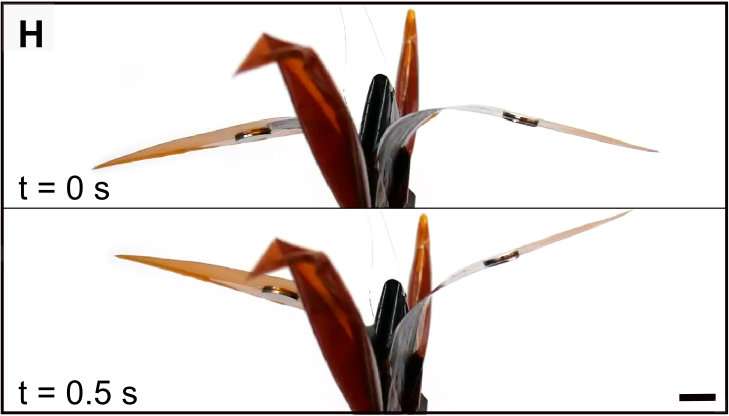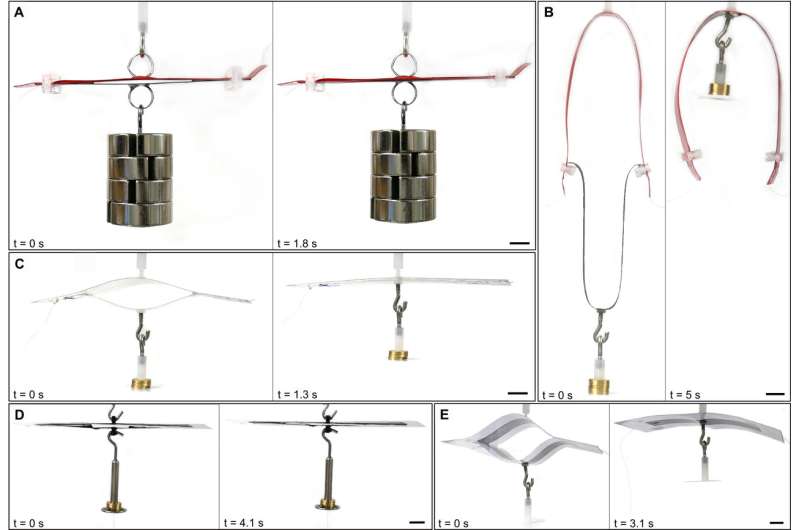December 20, 2018 report
Researchers find adding silicone oil enhances contracting force of self-zipping origami robots

A trio of researchers at the University of Bristol has found that adding a drop of silicone oil to oppositely charged ribbons significantly enhanced their ability to perform as self-zipping origami robots. In their paper published in the journal Science Robotics, Majid Taghavi, Tim Helps and Jonathan Rossiter describe their experiments with the oil and ribbon and what they found.
Origami is the art of folding paper into intricate objects—some types of folds can produce momentary animation in the resulting object. Scientists have been adapting ideas from origami to robotics to produce less energy-intensive products. In this new effort, the researchers report that applying silicone to ribbon enhanced its animation abilities.
One way to get origami-based robots to move is to make them with material that adheres to itself—ribbon is one such material. Two oppositely charged segments of ribbon become attracted to one another and tend to merge in a predictable, self-zipping fashion. Objects connected to them can thus be impacted as the ribbon zips itself. In studying the zipping properties of ribbon, the researchers discovered that adding a small amount of silicon oil increased the power of the zipping action. Using this dynamic, they created origami-based robots with more power. They demonstrated this increased power by building robots that hung from hangers and then added weights—the self-zipping action lifted the weight. They report that such hoists were capable of lifting 1000 times their own weight. They also suggest their robot hoists could be used as artificial muscles as the basis for a new type of assistive robot clothing—a specialty for the researchers. They believe such origami robots could potentially give people with impairments more independence.

The researchers also demonstrated other ways to use the oil ribbon; they built a crane that could flap its wings, grippers, a robot that could crawl and a spring that could tighten. They suggest such robots could also be used in space-based applications, offering a novel way to deploy solar panels, for example.
More information: Majid Taghavi et al. Electro-ribbon actuators and electro-origami robots, Science Robotics (2018). DOI: 10.1126/scirobotics.aau9795
© 2018 Science X Network


















